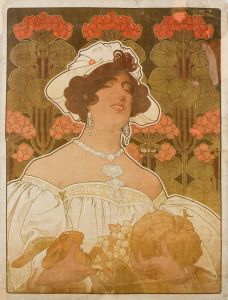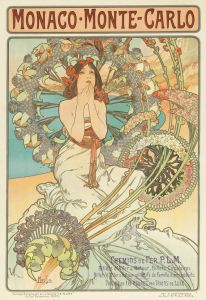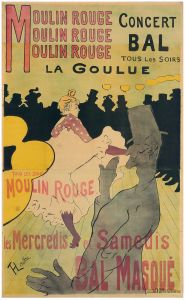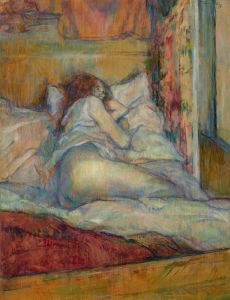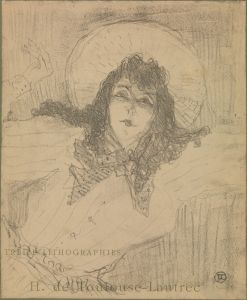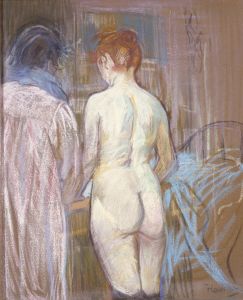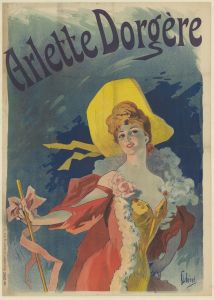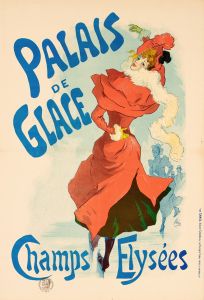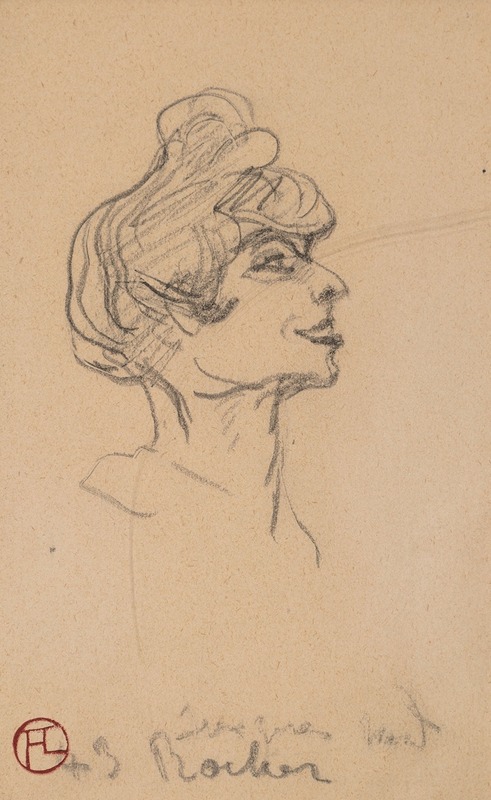
Mademoiselle Marthe Mellot dans La Gitane
A hand-painted replica of Henri de Toulouse-Lautrec’s masterpiece Mademoiselle Marthe Mellot dans La Gitane, meticulously crafted by professional artists to capture the true essence of the original. Each piece is created with museum-quality canvas and rare mineral pigments, carefully painted by experienced artists with delicate brushstrokes and rich, layered colors to perfectly recreate the texture of the original artwork. Unlike machine-printed reproductions, this hand-painted version brings the painting to life, infused with the artist’s emotions and skill in every stroke. Whether for personal collection or home decoration, it instantly elevates the artistic atmosphere of any space.
Henri de Toulouse-Lautrec, a prominent French painter and illustrator, is renowned for his vivid portrayals of Parisian nightlife in the late 19th century. One of his works, "Mademoiselle Marthe Mellot dans La Gitane," captures the essence of his artistic style and the cultural milieu of his time. Toulouse-Lautrec was born into an aristocratic family in 1864 and, despite physical disabilities due to childhood injuries, he became a leading figure in the Post-Impressionist movement. His work is characterized by its bold use of color, dynamic compositions, and keen observation of human behavior.
"Mademoiselle Marthe Mellot dans La Gitane" is a painting that reflects Toulouse-Lautrec's fascination with the theatrical world. Marthe Mellot, the subject of the painting, was a French actress known for her performances in the Parisian theater scene. Toulouse-Lautrec often depicted performers, capturing their personalities and the vibrant atmosphere of their performances. This painting is no exception, as it showcases Mellot in a role from "La Gitane," a play that was popular during that era.
The painting is executed in Toulouse-Lautrec's signature style, which combines elements of Impressionism with a unique approach to line and form. His use of color is particularly noteworthy, as he employs a palette that brings out the liveliness and drama of the theatrical setting. The brushwork is fluid and expressive, capturing the movement and energy of the performance. Toulouse-Lautrec's ability to convey emotion and character through his art is evident in this work, as he portrays Mellot with a sense of presence and vitality.
Toulouse-Lautrec's interest in the theater and its performers was not merely artistic; it was also personal. He was a frequent visitor to the cabarets and theaters of Montmartre, where he formed close relationships with many of the performers he painted. This connection allowed him to capture the intimate and candid moments of their lives, both on and off stage. His paintings often reveal the duality of the performer's existence, highlighting both the glamour and the underlying struggles.
"Mademoiselle Marthe Mellot dans La Gitane" is an example of Toulouse-Lautrec's ability to transcend mere portraiture. It is not just a depiction of an actress in costume; it is a window into the world of the Parisian theater, a world that Toulouse-Lautrec knew intimately and portrayed with both affection and insight. His work provides a historical record of the cultural landscape of Paris at the turn of the century, offering viewers a glimpse into the lives of those who inhabited it.
Today, Toulouse-Lautrec's paintings are celebrated for their artistic innovation and their contribution to the understanding of the social and cultural dynamics of his time. "Mademoiselle Marthe Mellot dans La Gitane" stands as a testament to his skill as an artist and his deep engagement with the world around him. Through his art, Toulouse-Lautrec has left an enduring legacy that continues to captivate audiences and inspire artists worldwide.





